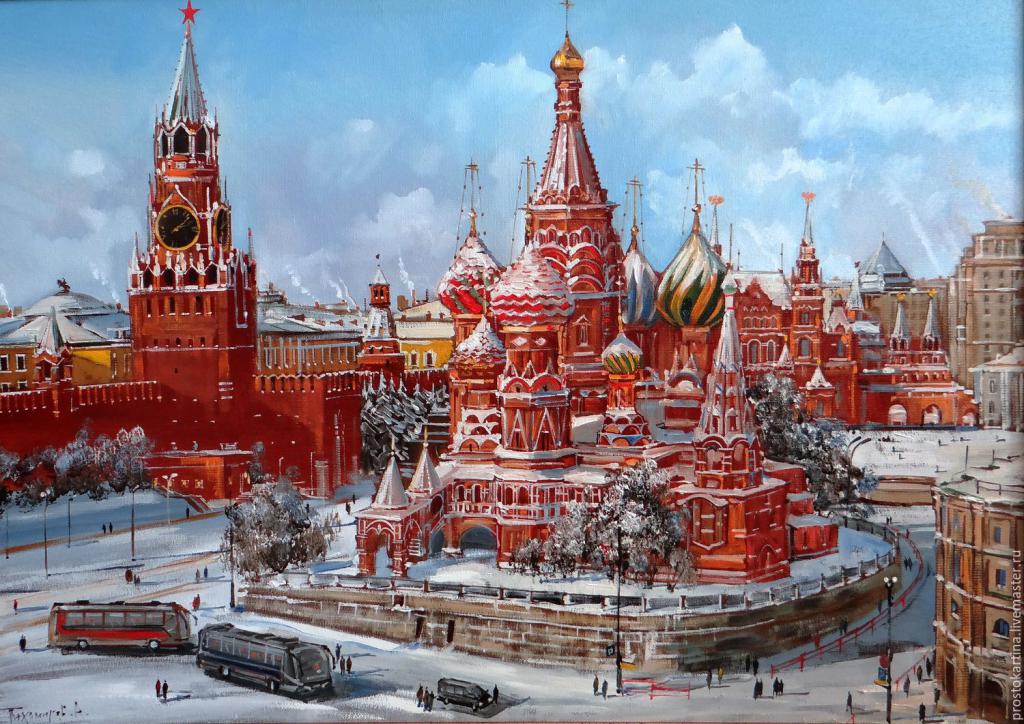Moscow has a long history. It was built and destroyed. Kings and emperors changed, wars and revolutions took place. The authorities were changed and reformed. In the past, Moscow suffered several fires, but each time the city was rebuilt. The administrative-territorial division of the city of Moscow also changed in time. At all times, it occupied a special position among Russian cities, and each head of state tried to improve the management system of this complex and peculiar city.
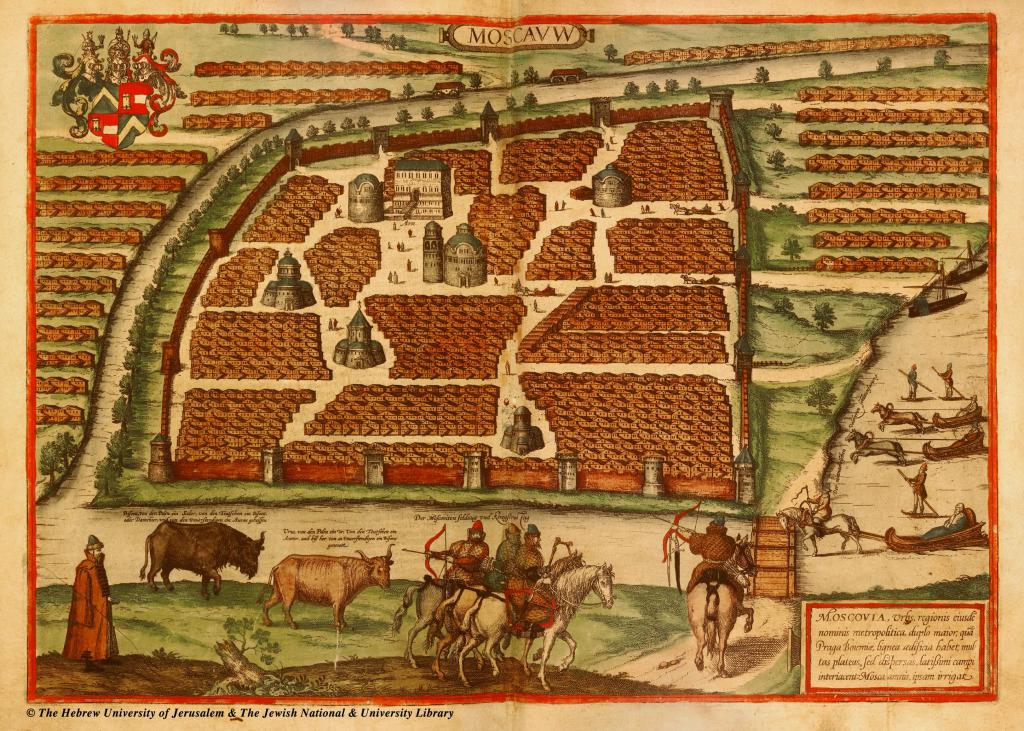
At the beginning of its existence, Moscow consisted only of the Kremlin and Posad. But later acquired a more complex structure. Each period of the country's development was accompanied by changes in Moscow itself.
The history of the administrative-territorial division of Moscow until 1991
In 1767 to 1916, Moscow was divided into parts. There were no territorial units yet. From 1917 to 1991, there were areas in Moscow. Moreover, the number and composition of units and areas in each time period was different.
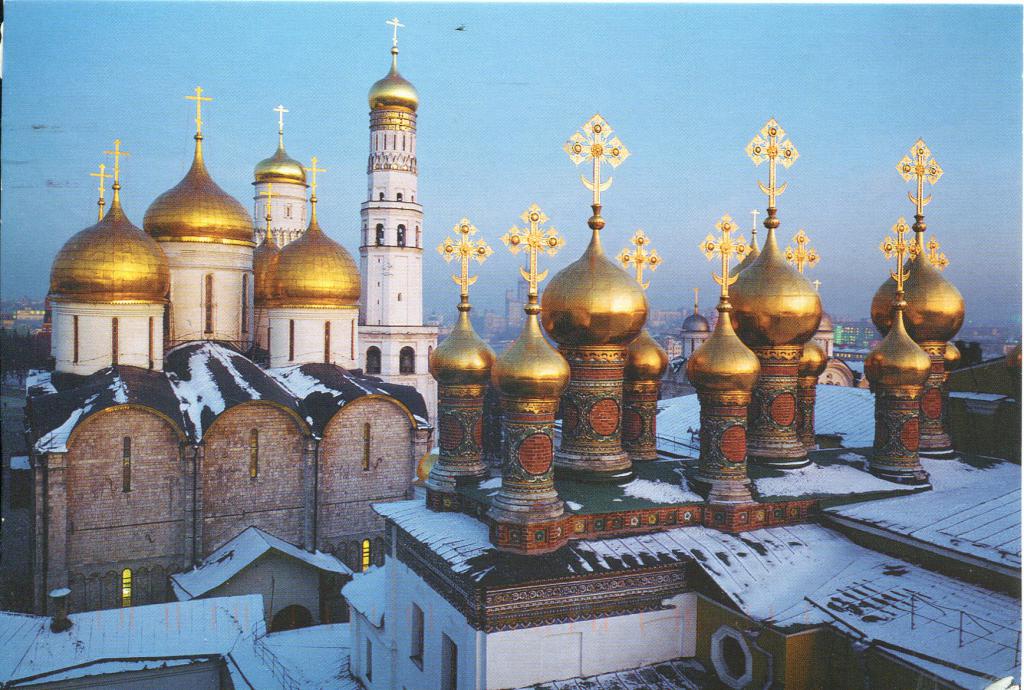
Administrative division of Moscow until 1991
| date | Number of parts / areas |
| 1767 year | 14 pieces |
| 1782 year | 20 pieces |
| 1810 year | 20 pieces |
| 1852 year | 17 pieces |
| 1896 year | 17 pieces |
| 1916 year | 17 parts and 7 suburbs |
| 1917 year | 44 commissar plots, then 11 districts |
| 1920-1936 year | 10 districts |
| 1936-1960 year | 23 districts |
| 1960-1969 year | 17 districts |
| 1969-1991 year | 30 districts |
Administrative division of Moscow after 1991
After the collapse of the USSR, 10 large administrative districts were formed, which consisted of municipal ones. But not for long. In 1995, municipal districts were replaced by districts.
At the beginning of 1995, there were 10 districts in Moscow: Central, North, North-East, East, Southeast, South, South-West, West, North-West, Zelenograd. They included 128 municipal districts.
In addition, three villages were included in Moscow. They were with the status of the district. It is Vnukovo, East and North. Territories with special status (TEOS) were also formed. This territory is Moscow-City, Tsaritsyno Park, Elk Island, Sokolniki Park, Izmailovo, Bitsa, Sheremetyevsky, Kitay-Gorod, Kolomenskoye, ZIL, Ramenki and others. 12 territories were allocated.
In 2002, TEOS, as independent entities, were liquidated.
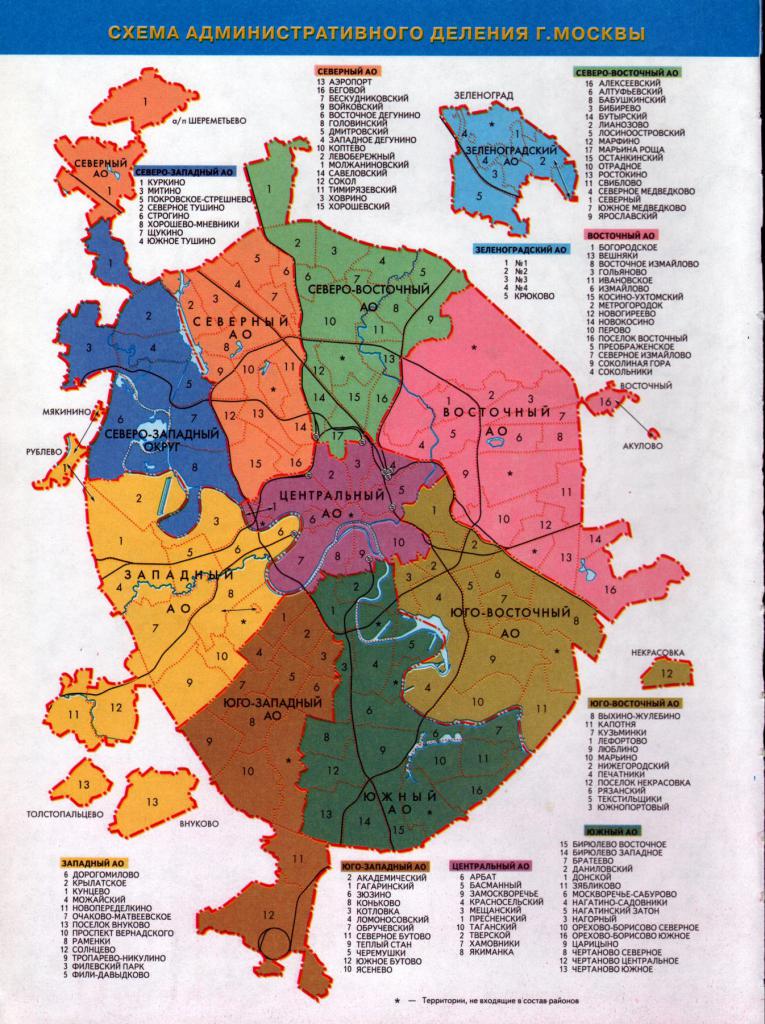
The borders of Moscow after 2011
In 2011, an agreement was signed between Moscow and the Moscow Region, which related to the clarification of borders. 102 land plots were transferred to the city, including the Lyubertsy aeration fields, the village of Tolstopaltsevo. The borders of Moscow were clarified in the areas of Mitino, Northern, Southern Butovo.
Almost every year in Moscow there are changes in the structure. The number of districts in districts is changing. New territorial units arise, existing ones are crushed and merged. This is due to attempts to find the optimal structure for controlling such a complex organism as Moscow.
New Moscow
From ancient times, the city developed on a monocentric basis. Building around the center, at first spontaneous, was carried out by rings: in the structure of Moscow the Boulevard Ring, the Garden Ring were formed. At the end of the 19th century, the border of the city was the District Railway (the current MCC). Subsequently, Moscow expanded to the Moscow Ring Road. And then the city stepped beyond its borders.
In 2012, a historic decision was made to expand the borders of Moscow. The main reasons for this were to give the city a new impetus for development, change the traditional gravity towards the center, create additional clusters for development, and improve the transport situation.
As a result, Moscow expanded by 148 thousand hectares. The boundaries of the city approached the borders of the Kaluga region. Its structure included the cities of Troitsk and Shcherbinka, as well as 21 municipalities.
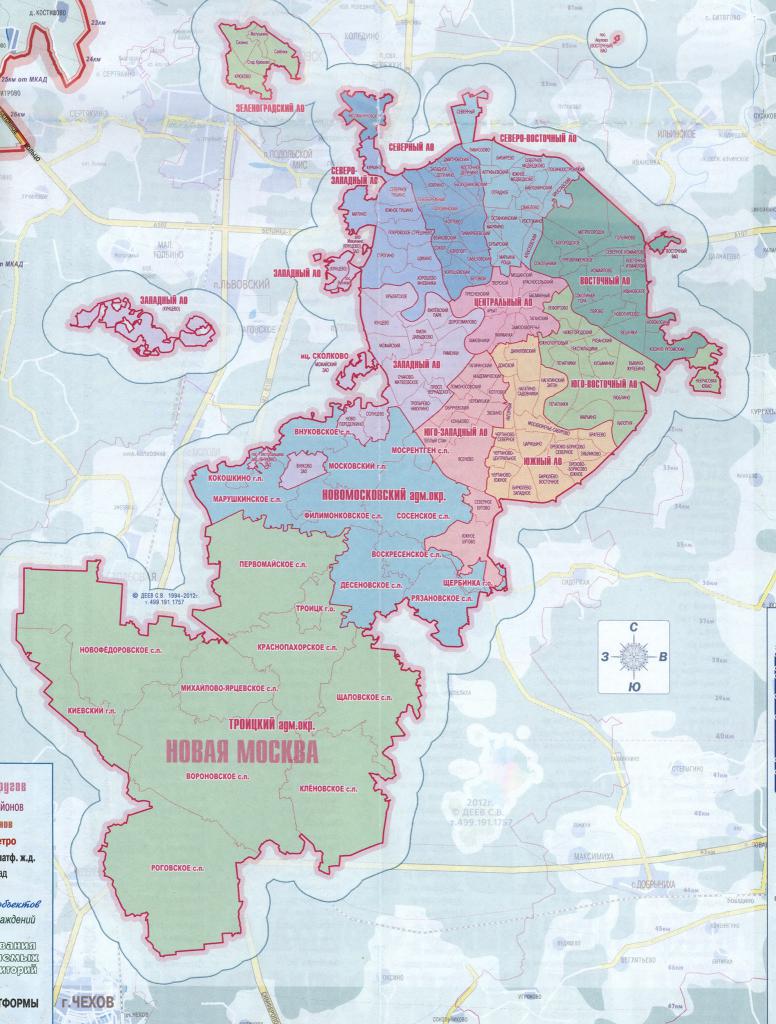
The administrative-territorial division of Moscow has changed again. Two districts arose: Trinity and Novomoskovsky. The area of Moscow in 2012 reached 2526.53 km2.
The population of Moscow is 12 380 664 people for 2017. About 2 million people come to work every day from the nearest suburbs.
According to the master plan of development, the division of New Moscow into three zones is supposed. The first, adjacent to the MKAD, will be actively built up in existing settlements. In the second zone, new comfortable complexes will be created. The third with beautiful nature will be equipped as a resting place for Muscovites. Particular importance in the development of projects for New Moscow is given to environmental protection measures. Without a comprehensive environmental review, not a single project will be allowed to be implemented.
In New Moscow there will be centers of business and financial activities, medical complexes, centers of innovation and development. Skolkovo and Troitsk will develop as science cities. The first and now is a research center. Skolkovo Open University provides training for young scientists, and the Skolkovo Foundation finances many interesting projects.
Construction is planned on these territories and underground lines: the subway line is planned to be extended to Troitsk.
There are a lot of problems in designing New Moscow. So far, the concept of development has not been detailed. There is no final master plan yet. This can lead to improper distribution of loads on the territory, problems of roads and the environment can arise.
Construction may be carried out randomly without taking into account future needs. But one thing is clear: with the development of New Moscow, the administrative-territorial division of Moscow will also change, be adjusted.
